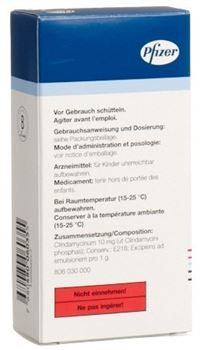It is in the heart of the silent operating rooms that a meticulous dance between science and humanity unfolds.Every gesture is deliberate, every decision made with absolute precision.In this universe, the life and health of patients are in the hands of those who wear the white coat.
Surgery is not just a matter of technique; it is an art that demands passion and commitment. Constant innovation allows for pushing the boundaries of what is possible, offering new hopes to those in need. Every intervention is an opportunity to make a tangible difference in a person’s life. It is this relentless quest for excellence that motivates me every day.

The world of cardiology is undergoing a revolution thanks to technological advancements, and Heart Rhythm 2025 is positioned as a flagship event to showcase the latest innovations. Among these, Pulmonary Vein Ablation (PFA) particularly attracts the attention of healthcare professionals and patients suffering from atrial fibrillation (AF). This article explores the new data presented by medtech companies during this major event.
What is the pfa and why is it important?
Pulmonary Vein Ablation, or PFA, is an innovative technique used to treat atrial fibrillation, a common heart rhythm disorder. Unlike traditional methods such as cryoablation, PFA uses electrical impulses to isolate the pulmonary veins, areas often responsible for irregular electrical signals. This method is known for its precision and effectiveness, thereby reducing the risks of complications and improving outcomes for patients.
At the Heart Rhythm 2025, several medtech companies presented data demonstrating the benefits of PFA. These studies highlight a significant reduction in AF recurrences and a faster recovery for patients post-intervention.
What new data was presented by medtech companies?
The participating companies, including Medtronic and Boston Scientific, unveiled promising results from recent clinical trials. These data show increased effectiveness of PFA compared to conventional treatments. For example, Medtronic’s trials reveal a 30% reduction in AF recurrences among patients treated with PFA, compared to cryoablation.
Moreover, Boston Scientific presented the Farapulse, a PFA device that directly competes with Medtronic’s solutions. Initial studies indicate that the Farapulse offers better patient tolerance and superior precision in isolating the pulmonary veins. Preliminary results are encouraging and suggest that the Farapulse could redefine treatment standards for AF.
What are the advantages of pfa over traditional methods?
PFA has several notable advantages over traditional techniques such as cryoablation or radiofrequency. First of all, PFA is less invasive, which reduces recovery time and the risks associated with surgical intervention. Furthermore, the precision of PFA minimizes damage to surrounding healthy tissues, thus decreasing post-operative complications.
Another key advantage of PFA is its speed of execution. Procedures can be performed in a fraction of the time required for conventional methods, allowing for more effective treatment and better allocation of medical resources. These benefits contribute to improving the overall patient experience and increasing success rates of interventions.
How does pfa influence innovation in the medtech sector?
The growing success of PFA at Heart Rhythm 2025 reflects the importance of innovation in the medtech sector. Companies are investing heavily in developing cutting-edge technologies to meet the complex needs of patients with AF. This race for innovation has not only stimulated competition but also accelerated the development of more effective and safer solutions.
The integration of AI and advanced algorithms in PFA devices further improves treatment accuracy. For instance, Medtronic uses real-time imaging systems combined with predictive analytics to optimize each intervention. These technological advancements promise to transform the management of heart rhythm disorders in the long term.
What are the future prospects of pfa in the treatment of AF?
The data presented at Heart Rhythm 2025 pave the way for new prospects for PFA. Future research will focus on optimizing treatment protocols and expanding the therapeutic indications of PFA. Additionally, collaborations between medtech companies and research institutions will allow for the development of even more sophisticated and personalized technologies.
Moreover, the expansion of PFA into underserved areas could improve access to care for many patients. By making procedures more accessible and affordable, PFA could play a crucial role in reducing the prevalence of AF and improving patients’ quality of life.
What challenges need to be addressed for the widespread adoption of pfa?
Despite its many advantages, the widespread adoption of PFA still faces certain challenges. One of the main obstacles is the training of healthcare professionals in this new technique. It is essential to ensure that surgeons and technicians are fully trained to use PFA devices effectively and safely.
Furthermore, the costs associated with the development and production of PFA technologies remain high. To promote broader adoption, it is crucial to find solutions to reduce these costs without compromising the quality of care. Public-private partnerships and funding initiatives could play a key role in achieving this goal.
How do patients benefit from pfa?
Patients with atrial fibrillation derive numerous benefits from PFA. In addition to representing a less invasive and faster treatment option, PFA offers significant improvements in quality of life. Patients may experience a reduction in symptoms such as palpitations, fatigue, and shortness of breath, allowing them to return to their daily activities more quickly.
Moreover, the high success rate of PFA means that fewer patients require repeated treatments, reducing the stress and costs associated with multiple interventions. Patient satisfaction is also improved thanks to better management of the condition and a decrease in post-operative complications.
What are the testimonials from healthcare professionals about pfa?
Feedback from healthcare professionals attending Heart Rhythm 2025 is largely positive regarding PFA. Many highlight the ease of use of the new devices and the improvement in clinical outcomes. One cardiothoracic surgeon stated: “PFA represents a turning point in the treatment of AF. The clinically observed results are extremely promising and pave the way for a new era of cardiac care.”
Another cardiology expert added: “Ongoing innovation in the medtech field, such as PFA, allows us to offer our patients more effective and safer treatments. It is exciting to see so much progress in such a short time.”
What are the upcoming technological developments for pfa?
The technological prospects for PFA are vast and promising. The next generations of PFA devices will integrate cutting-edge technologies such as artificial intelligence and machine learning to further refine treatment accuracy. These advancements will enable the personalization of interventions based on individual patient characteristics, thus optimizing clinical outcomes.
Furthermore, research efforts are focusing on miniaturizing PFA equipment, making procedures even less invasive and more accessible. The integration of real-time data management software will also facilitate the monitoring of patients post-operation, allowing for better long-term management of AF.
How does Heart Rhythm 2025 influence trends in the medtech sector?
Heart Rhythm 2025 has a significant impact on trends in the medtech sector by highlighting the latest innovations and fostering exchanges among industry leaders. This event serves as a platform for launching new technologies and for strategic discussions about the future of cardiac treatments.
By showcasing technologies like PFA, Heart Rhythm 2025 encourages healthy competition among medtech companies, stimulating innovation and continuous improvement in care. The collaborations and partnerships formed during this event are likely to propel further progress in the treatment of AF and other cardiac conditions.
What is the economic impact of pfa on the healthcare sector?
PFA has the potential to generate a significant positive economic impact in the healthcare sector. By improving the efficiency of AF treatments, PFA can help reduce overall healthcare costs. Fewer recurrences and faster recoveries translate into decreased hospitalizations and better utilization of medical resources.
Moreover, the growing adoption of PFA could stimulate economic growth in the medtech sector, creating opportunities for the development of new technologies and the expansion of existing companies. Investments in research and development of PFA solutions could also attract additional funding, thereby fostering continuous innovation and job creation in the field.
How do health policies influence the adoption of pfa?
Health policies play a crucial role in the adoption and diffusion of PFA. Governments and regulatory bodies must recognize the benefits of PFA and facilitate its integration into standard treatment protocols. This includes establishing clinical guidelines, insurance coverage for costs, and support for training initiatives for healthcare professionals.
Furthermore, policies that promote innovation and collaboration between the public and private sectors can accelerate the development and adoption of PFA technologies. Financial incentives and research programs can encourage medtech companies to invest more in PFA, thereby ensuring wider availability of this innovative technology for patients worldwide.
What is the role of pfa in the overall management of heart health?
PFA is positioned as an essential component of the overall management of heart health. By offering an effective alternative to traditional treatments, PFA enables a more personalized and proactive approach to managing atrial fibrillation. Integrated into a comprehensive care strategy, PFA contributes to better prevention of cardiac complications and improved patients’ quality of life.
Moreover, PFA can be combined with other therapeutic interventions and cardiac rehabilitation programs to provide comprehensive and holistic care. This integrated approach ensures that patients receive optimal care throughout their health journey, from initial diagnosis to long-term follow-up.
Conclusion without a conclusion
The PFA, along with colleagues from @FIFPRO Europe, @EuropeanLeagues and @laliga, were in Brussels today for the formal submission of a legal complaint against FIFA relating to its control of the international match calendar.
— PFA (@PFA) October 14, 2024













